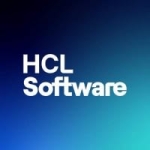What is most valuable?
Mendix provides the big-picture to the detail and the detail to the big-picture and they do that well. The tool chain allows one to model the business in the easy-to-use Business Modeller, then to deploy the app server with the model, deploy the DB schema to the database and have it running with : One click. They wrap all of this detail, in a big picture platform by integrating everything into the software development life cycle that provides the techies with the detail of what to do next and the business owner with where things are and how long they will take. The most valuable feature is being fast without painting yourself into a corner.
How has it helped my organization?
Mendix has helped to dissolve the divide between “business” and “IT”, between business speak and technical jargon, between classical project management and disciplined agile delivery. It reduces friction to deliver projects iteratively and reduce time to market and helps change the organisational culture, if the culture is open to this. In short, Mendix has improved our ability to delight our customers.
What needs improvement?
We need better support for master data management, consuming corporate dictionaries and exporting the models to others. We also need better reporting and visualisation as this is a critical part of each app and currently the reporting side has to rely on external BI tools. Additionally, we need better support for quickly integrating with external data sources without writing code or reliance on ETL tools. A Mendix profiler will also help and lastly, a multi window business Modeller so that one can use the Modeller more productively on two monitors.
For how long have I used the solution?
We've used it for six years, since 2010.
What was my experience with deployment of the solution?
There are very rarely issues with the deployment.
What do I think about the stability of the solution?
We have had Mendix apps that were not maintained properly and left to tick over that were difficult to keep stable and upgrade due to large databases and insufficient resources : This is more due to a lack of engineering than anything related to Mendix. But because Mendix makes things easy, clients often feel like it does not require the same engineering disciplines and this sets up a client for deployment, stability and scalability issues.
What do I think about the scalability of the solution?
Generally there have been no issues scaling. Keep in mind that Mendix runs on a RDBMS as its main persistent store and as such will scale with the data base. We find that the Mendix App server is only the bottle neck on tight loops over LOTS of data and when using dynamically calculated values. However, this is not typical use cases for Mendix and can be avoided by using microservices that do tight loop/ETL, simulation etc. work loads and leave complex business processes to Mendix.
How are customer service and technical support?
Customer Service:
At times when we hit a serious bug, Mendix has always been quick to respond and fix the issue. The user forums are active and Mendix staff is encouraged to provide answers. In general, quite good. Can always be better but in comparison to other large tech companies, they like to please and help.
Technical Support:
We evaluated a number of tools that claimed to offer productivity platforms and model driven development. The success of Mendix is of course using it where it is strong. Mendix is not an BI or ETL tool and we rather use Mendix in collaboration with a number of tools like Blaze, Talend, YellowFin etc. Why Mendix? Its model driven approach is superior rather than a code generator as used by many other productivity platforms. This keeps you fast rather than being fast in the start of the project. A model driven approach makes it possible to focus on solving the problem at hand rather than tinkering with code that has to be maintained in three months.
Which solution did I use previously and why did I switch?
Mendix is not a "RAD" tool and there really is nothing like it, similar tools have started appearing and the approach is catching on. Model Driven tools differ in philosophy and implementation and needs a different mind set to leverage optimally.
How was the initial setup?
Mendix presents a deceptively simple environment that seems too shallow for many techies, but is not. It does present a completely different paradigm and team culture and to leverage Mendix a change in corporate culture might be required. From us and them, to a integrated innovative whole where technologists can focus on delivering value to the rhythm of business demands. Convincing classical techies might be a challenge and this often limits the success of implementations.
What about the implementation team?
We started off by seeding our team culture the Mendix culture by working with them on a number of projects. Since then we have grown a number of teams for ourselves and our clients. Advice: Get a Mendix Engineer to seed the different culture and flourish from there, it will put your investment on a faster benefit-track. However, this is not required and growing organically might work depending on your lead Mendix engineers’ propensity to innovate, integrate and deliver business value.
What was our ROI?
ROI is dependent on the importance of a “fast time to market”. If a fast time to market is not a determinant, then write assembly or C, else Mendix might have a part to play.
What's my experience with pricing, setup cost, and licensing?
Mendix can be expensive if you stare at the bottom line and compare it to traditional tech - which is flawed. Think big picture and time to market with a few bright resources rather than micromanagement and a army of developers and it might lead one to realise that saving a number of salaries, training, career building and hand holding might be a bigger saving than your average capex/opex watching manager can see. Mendix is negotiable on licensing and will try to make the project where possible.
Which other solutions did I evaluate?
We had a look at OutSystems, some open source initiatives and BPM tools.
What other advice do I have?
Mendix requires adoption from the top and support for the teams that implement it to not be ham strung by IT. Do not approach Mendix like a “traditional” IT shop will : It requires a close integration with business, driven by Business for Business by IT rather than by IT for for business. It requires a model driven approach to solving problems that provides speed gains when describing solutions in its language rather than designing everything from scratch, think different, leverage models, accelerate delivery, speak business.
They have good attention to detail and keep things simple and clean.
Disclosure: My company has a business relationship with this vendor other than being a customer. We are a client, a partner and we sell Mendix to our clients

























